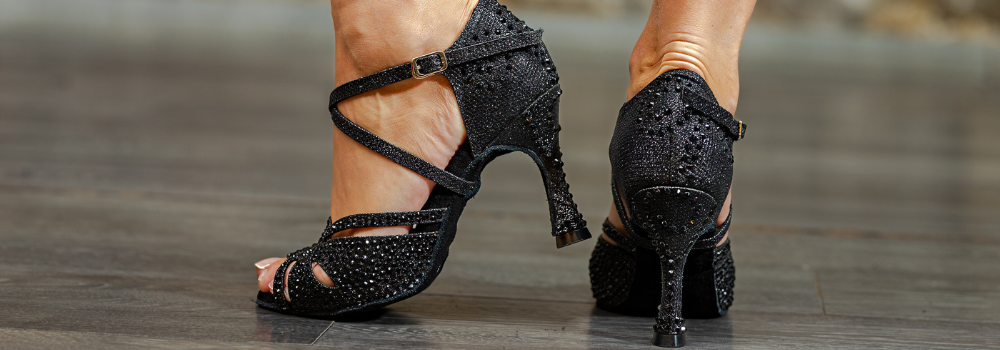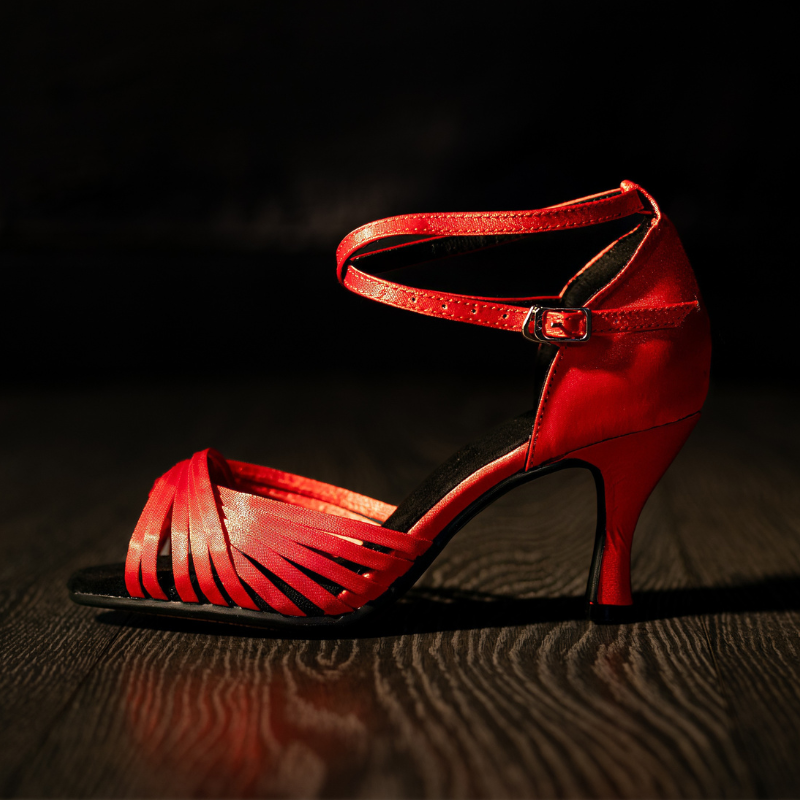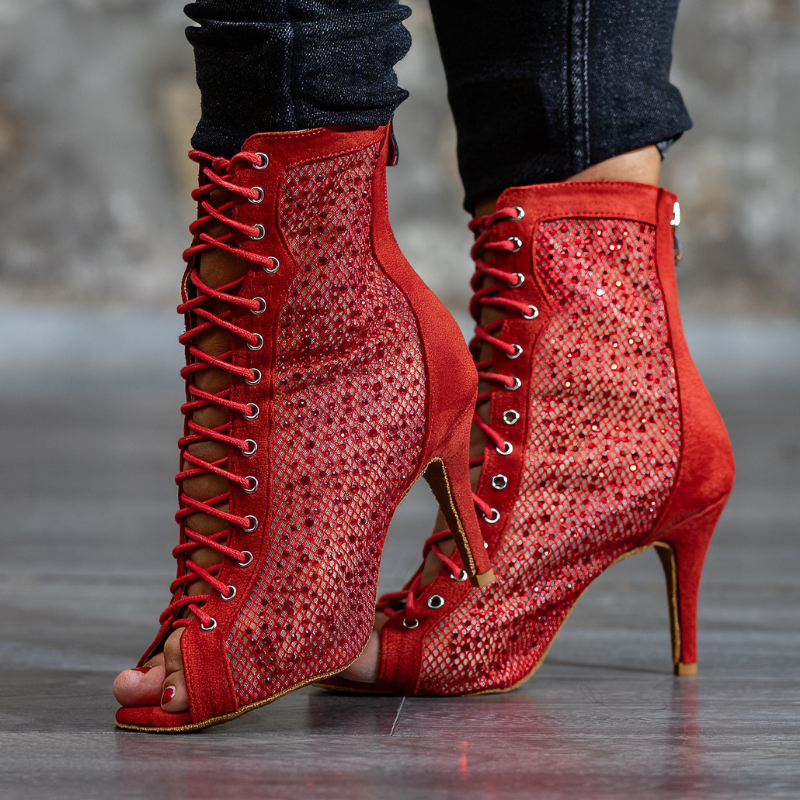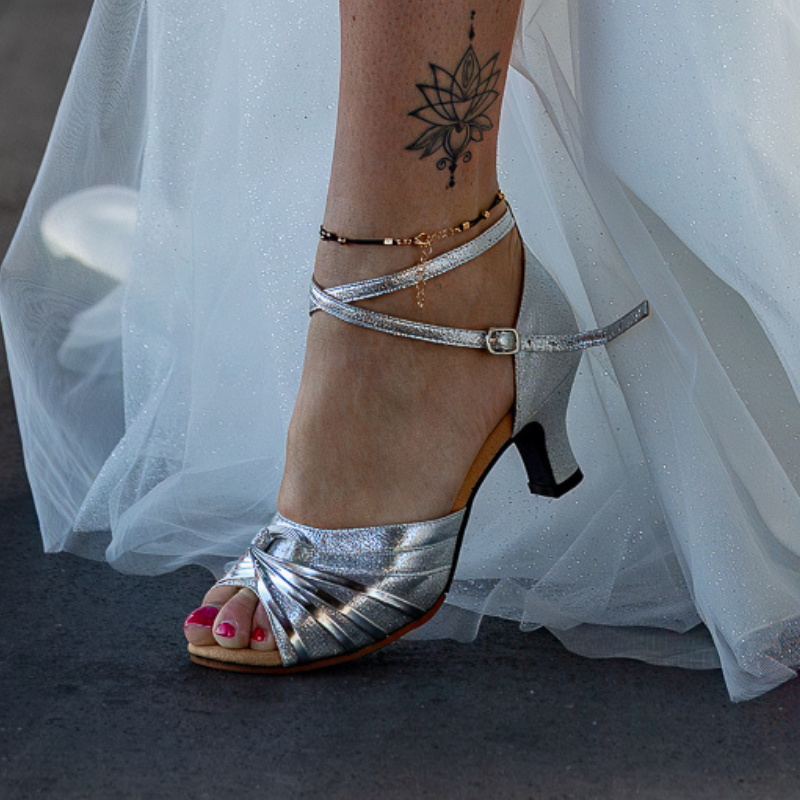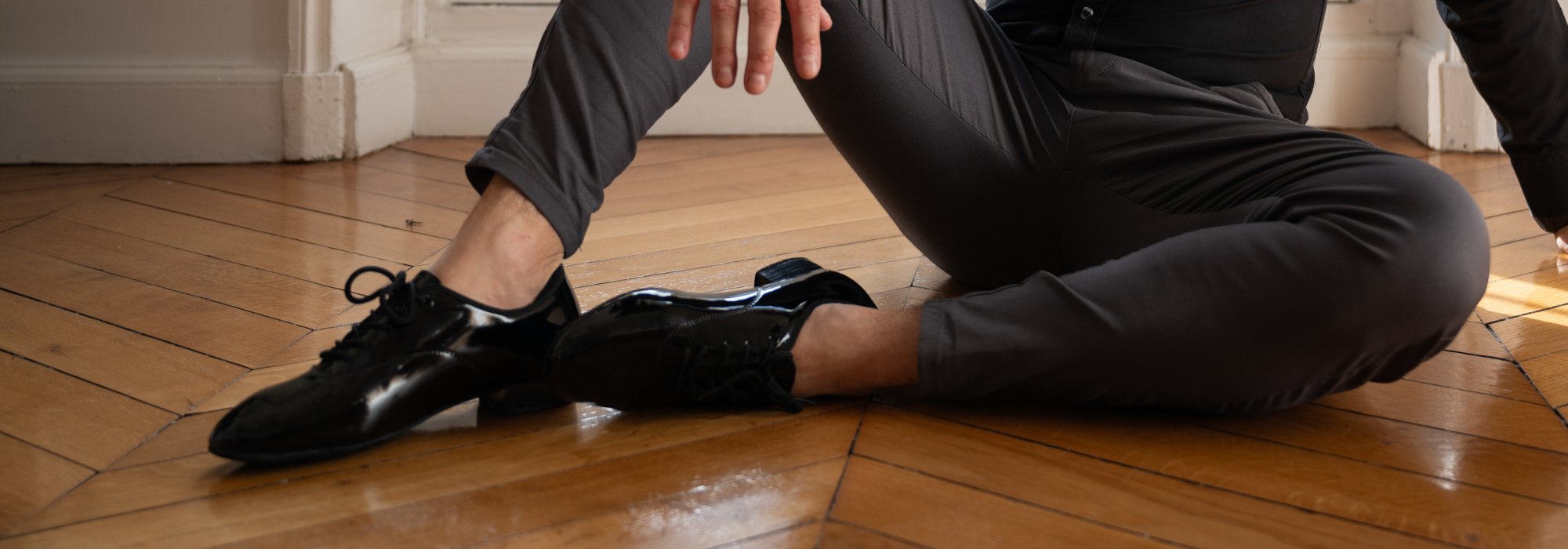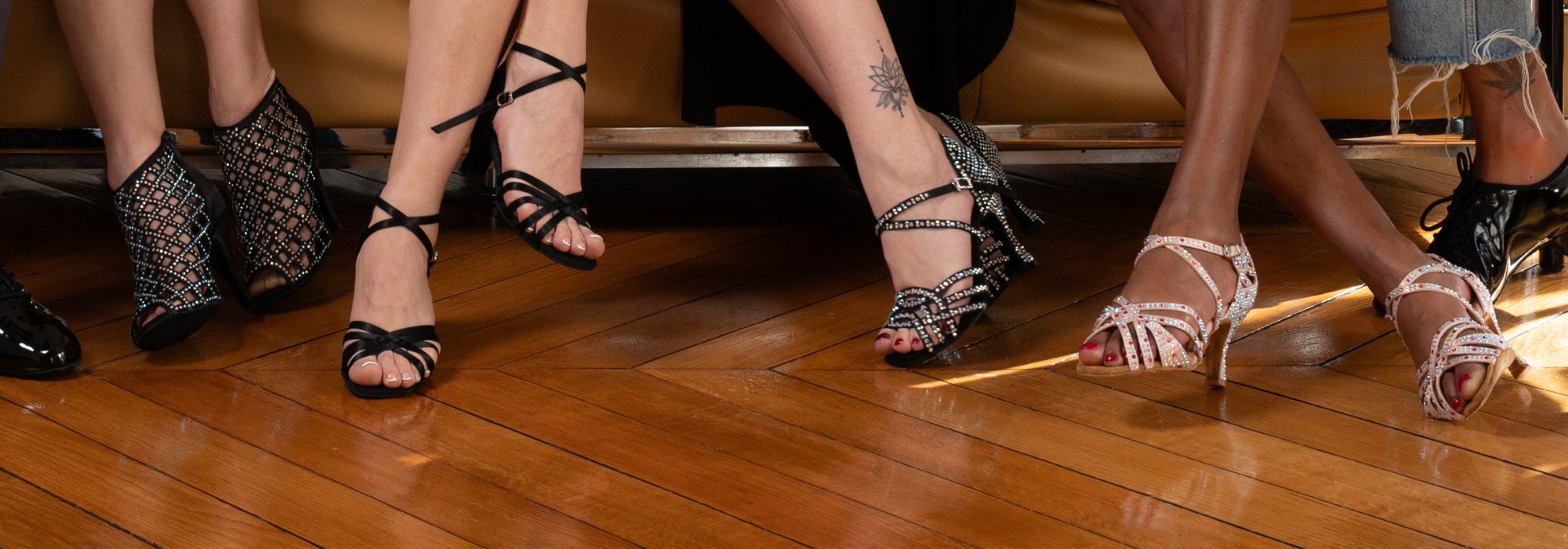The essential criteria for a good tango shoe for women
Diving into the elegant universe of tango is to be guided by passion, connection ... and good equipment! For a dancer, choosing her beginner female tango shoes is drawing the contours of her first steps, her first pivots, her first "ochos". A delicate choice, which can transform a session into pure magic or ordeal for the feet. Too often, research stops on aesthetics; But did you know that comfort, stability, support and material are the real partners of a successful learning? In this article, I take you on the way to the essential criteria to choose your Women's tango shoes, in order to guarantee you the security, freedom and sensuality of the movement. Catch the hand of your curiosity: you will make your supports dance like never before!
Comfort above all: the base to start well
Why is comfort essential for the beginner dancer?

Tango is a dance of emotion, precision ... and endurance! Your first hours on the track may put your feet to the test. Good comfort is the secret to keeping the pleasure intact until the end of each tanda. A too narrow or poorly adapted shoe will prevent you from feeling music and your partner. Opt for a model with a flexible fit, a soft lining and a material that marries the shape of your foot. Always try your shoes at the end of the day, when the feet are a little swollen: so you will avoid unpleasant surprises. Your feeling of well-being is then invited into each movement, from the simple basis to the most refined rolled up.
- Favors soft leather or breathable microfiber
- Tests the flexibility of the footwear before purchasing
- Avoid too tight or rigid shoes
The insole, your invisible ally
Never neglect the insole. A good cushioning prevents you pain in heating. Some models, such as those offered on Our shop, offer specialized padded interior soles. This small detail will make all the difference during your first long practice sessions.
- Look for the mention "padded sole"
- Check that the sole is not too fine or too thick
Stability: the key for safe support
A heel adapted to start without fear

The choice of heel is crucial for a beginner woman tango shoe. Too high, it weakens your supports and makes technical learning complicated. To start with confidence, aims a heel of 5 to 7 cm, rather wide. It will accompany your weight transfers while keeping an elegant line. We often talk about "heels dance" for glamor, but on the track, it is the balance that prevails. Let yourself be guided by stability before style, you will discover that dance lies in your freedom of movement, not in the height of the heel.
- Moderate heel: 5–7 cm recommended at the start
- Stable form (square or flared at the base)
- Avoids fine or too high stilettos
Outsole: slide and grip, subtle harmony
Tango requires gently pivots and frank support. The sole must be as flexible as it is precise. Privileged an outsole in returned leather or suede: it allows you to turn without forcing, while retaining a good grip on the parquet floor. If you dance on different types of floors (studio, ball, street), think about protecting or adapting your soles with dedicated accessories.
- Swedish leather sole for the interior
- Froke sole for outside if necessary
- Tip: rub the sole with a special brush to maintain its grip
Maintaining: to dance with confidence
Good tightening for maximum safety

Imagine a waltz of arms and legs ... Your feet must remain firmly attached to their partner. Privileged tango shoes with crossed straps, adjustable loop or flexible lacing. This avoids any feeling of floating and protects from small accidents of course (sprains, suddenly offset). A good maintenance discharge confidence: you can focus on technique and musicality rather than thinking about your shoe.
- Promotes models with straps around the ankle
- Prefers enveloping footwear rather than too wide openings
The anatomy of the tango shoe: does not neglect the buttress
The buttress (the rear part of the shoe that encompasses the heel of the foot) is often the forgotten detail ... while it ensures stable support during pivots and salidas. To avoid instability, select a shoe whose buttress is firm but flexible, capable of marrying your foot without injuring it.
- Reinforced buttress = best heel holding
- The padding is never superfluous to start
Materials: Alliance of flexibility and sustainability
Synthetic leather, satin: what material favor?

The choice of materials influences the longevity and flexibility of the shoe. For a beginner, soft leather remains the reference for its ability to shape your foot shape while remaining durable. Satin offers a chic appearance and a certain flexibility, but it gets faster. The breathable and light microfiber is perfect if you have sensitive feet or easily sweat.
- Synthetic leather = comfort + durability
- Microfiber = lightness, ideal for sensitive feet
- Satin = elegant look, but attentive maintenance necessary
The importance of the interior of the shoe
The inner lining must be soft, non -abrasive, and allow sufficient ventilation. Beware of low-end synthetic materials, which can cause irritation or warm-up. A leather or microfiber coating inside provides a pleasant feeling of freshness and comfort, even after several tandas.
The sole, a real conductor of your support
Thickness and structure: the balance to be found

Too thick sole isolates you from the ground; Too fine, she tires her foot. The models designed for beginner dancers often offer a flexible, messenger sole, with the right medium between sensation and protection. This detail will allow you to smell the ground, refine your supports and gain musicality during the first sequences.
- Aims at a 3 to 5 mm thick sole for a good feeling
- Tests flexibility: gently folds the shoe, it must offer slight resistance
Rigidity versus flexibility: find your preference
Depending on the morphology of the foot, a little more or less rigidity can help. Do you have a strong foot? A slightly firmer sole will bring you support. Rather fine foot? Favors flexibility. Do not hesitate to take a few steps, pivots and weight transfers in the store before deciding.
Size and fit: neither too tight nor too loose
Choose the right size when you start
In Tango, an adjusted fitness avoids bulbs and pain. Your shoe should wrap your foot without crushing it. When you try, make sure that your big toe does not touch the end, and the shoe remains in place when you lift the heel. Please note: each brand puts differently! Consult the guides of the sizes and, if necessary, ask our experts on advice on Our SIZE Guide.
- Take the usual size, but always try before buying
- For wide feet, looking for suitable models
Half-stall management and tricks
If you are between two sizes, choose the most adjusted: the leather softens over time. You can also slide half a half to perfect support, especially at the start of the season, when the shoe is new.
The aesthetics that sublime - but must not prevail
Prioritize the technique on appearance
Tango is a sensual, elegant dance ... but beauty should never take precedence over comfort, especially at start -up. Take sober models, the shape of which marries your foot well. You can then turn to models decorated with rhinestones or embroidery, once the technique has been mastered.
Colors that inspire your movements
A nude or black color lengthens the leg and agrees with all your outfits. Later, dares the bright or metallic colors, to make your look twist during the Milongas!
Fitting and handling in practice
The importance of dynamic fitting
Never just a static fitting! Put on the shoes, take a few steps, try a pivot, simulates an Abrazo. Does the shoe naturally follow the movement, without friction or pain? Take the time, listen to your sensations, and ask a teacher or a seller specializing in dance. This is the only way to avoid regrets!
- Check the maintenance by swiveling on each foot
- Test different surfaces if possible
Adapt your shoe to your progression
At the start of the course, aims security and confidence. Later, you can adjust the heel height or choose a more worked fit, depending on your sensitivity and your artistic desires.
Investment in quality, a guarantee of progression
Why bet on the top of the range from the start?
A quality beginner female tango shoe lasts several seasons and may give you a taste for practice! She protects your joints, support your technique and avoid buying lower quality pairs every six months. It is a pleasure investment: each euro spent is one more music note on the score of your progress.
- A good shoe adapts to your foot from the first week
- Opts for specialized dance brands
- Beware of copies or too cheap models
Maintain your shoe for long hours of dance
Maintenance extends the lifespan of your shoes: aere it after each course, uses holes to keep in shape, regularly brush the leather sole. A regular interview is a loyalty preserved for your silent partner ...
FAQ - Frequent questions
Which heel height recommend for a beginner women's tango shoe?
For beginners, a heel of 5 to 7 cm, rather wide, is ideal. It offers enough stability while allowing you to gradually work the technique without jeopardizing the balance or the health of the foot.
Should we favor a leather or rubber sole to start?
The "suede" leather sole is preferable for indoor practice, because it facilitates pivots and offers the best compromise between sliding and hook. The rubber is more suitable for outdoor walking, but rarely recommended on the dance floor.
How to choose the right size for your first tango shoes?
Choose your usual size, but favors a dynamic fitting. The shoe should marry the foot without compressing it. Take into account the elasticity of the leather, which softens slightly over time.
A closed or open model to start Argentinian tango?
The two options exist, but to start, a semi-open model (small opening in front or on the sides, with support flange) combines stability and elegance. This limits the risk of “offset” during a technical figure.
How to maintain your dance shoes to make them last?
Always aere your shoes after use, put them in a breathable bag, use brushes suitable for the sole and move them away from humidity. Regular maintenance guarantees comfort and longevity.
My foot is wide, are there solutions to put better?
Many models are offered in "large" or "extra-large" version. Always try before buying and does not hesitate to consult an expert in store to orient your choice.
When to change tango shoes as a beginner?
As soon as you feel wear of the sole or a lack of support, or that you progress technically (ex: desire for a higher heel or a specific fit), it is time to reinvest in a model more suited to your evolution.
Discover our Women's tango shoes available on our Salsanueva online store Shop, thoughts for demanding dancers.

